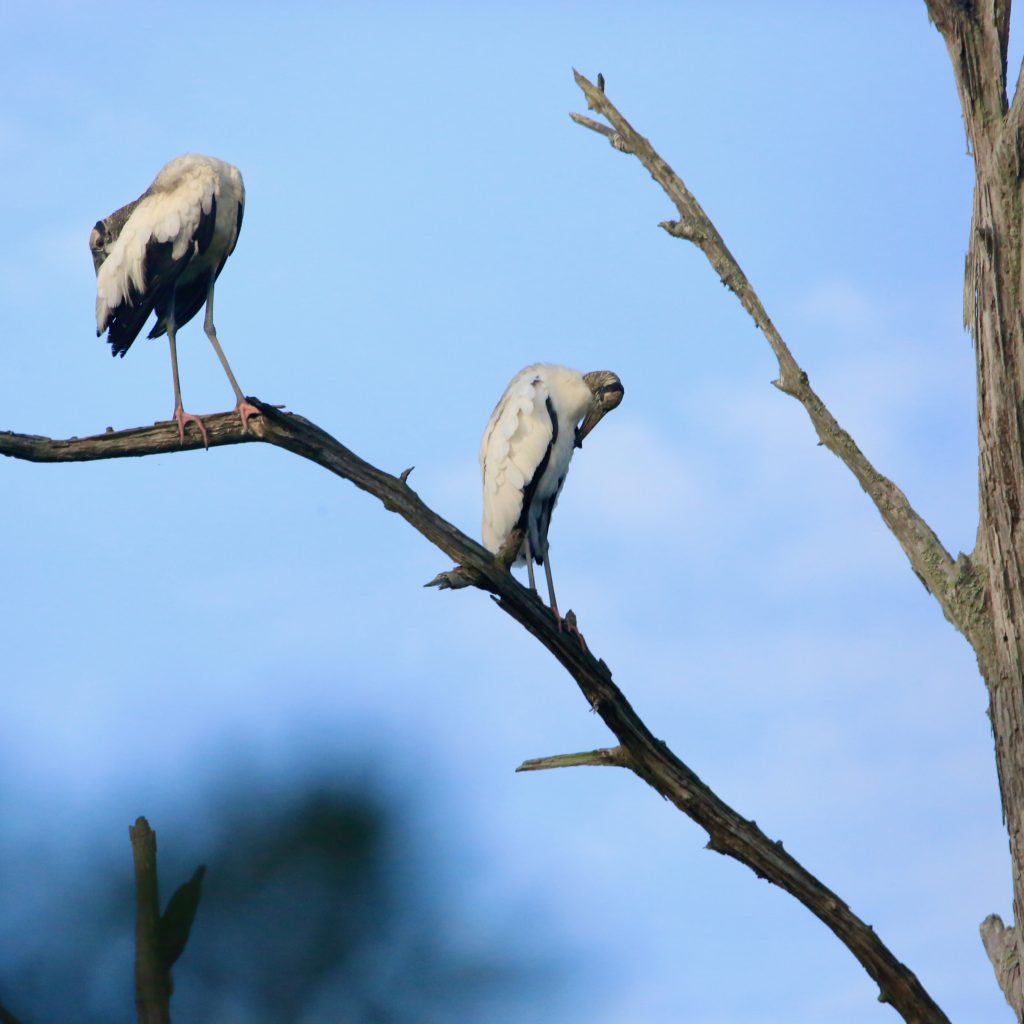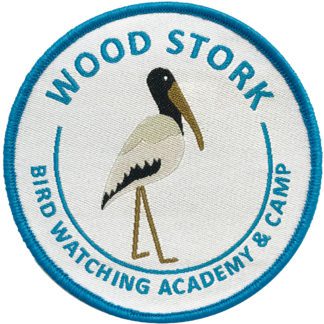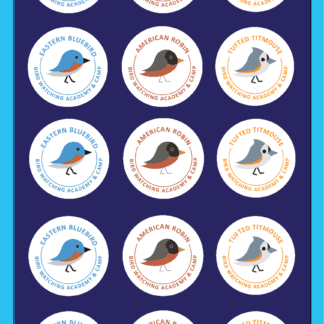
One of North America’s largest and only native wading birds, Wood Storks are found wading through the shallow waters of south-eastern swamps and wetlands. They are extremely large, heavy-billed, and are excellent fliers. These birds derive their name from the brown, heavily textured heads, resembling a bark of food when observed from up close. They are intimidating from every angle, towering over other waterbirds and standing out from all other flocks as they walk through wetlands while foraging.
About Wood Storks
These birds are hard to miss and are easily one of the most important birds on the continent. The common myth of Wood Storks bringing babies to new parents derives its roots from observers marveling at their grace centuries ago. These silent birds are some of the few that put one in complete awe of them, reminding the individual that nature can simply be beyond stunning sometimes. Not only are they large in their size, but they are also invaluable in
reconstructing the ecological history and the resulting diversity in North America. Today, we want to be shedding some light on these majestic birds. We will be discussing:
● Wood Stork Photos, Color Pattern, Song
● Wood Stork Size, Eating Behavior, Habitat
● Wood Stork Range and Migration, Nesting
GET KIDS BIRD WATCHING
Wood Stork Color Pattern
Adult Wood Storks are entirely white except for their primary and secondary flight feathers, and their short tail, which is black with a greenish and purplish sheen. Their head and neck don’t have feathers and are scaly, and dark gray. Their bill is black, long, and very thick at the base, tapering evenly and decurved on the lower half. Both sexes are similar in appearance, and their plumages similar throughout the year except for during breeding season; the difference during the breeding season is subtle as well, with the undertail coverts longer and plumelike. They also have a buff or pinkish tinge on the wing-lining or elsewhere on plumage. Their legs and feet are dark, and their toes are pink during the breeding season, fading to pinkish during the remainder of the year. Juveniles are similar to adults, but their heads and neck are covered with grayish feathers that are gradually lost as the bird matures. Juveniles also have a pale yellow or straw-colored bill that gradually darkens with age.
Description and Identification
Wood Storks are extremely easy to identify, as there is no other bird that looks quite like them. In the United States, you can see these birds at wetland preserves or wildlife areas in Florida, South Carolina, and Georgia. They forage with their head down as they hold their heads horizontally, but they stand taller and larger than all other wetland birds in the area. They tower over other Herons, Ibises, and Egrets even when their large bills are out of sight. If not in areas of standing water, roosting Wood Storks might settle in areas with trees nearby. They also have enormous black-and-white wings that are easily visible to the naked eye if one looks up.
Wood Stork Song
Wood Storks are generally silent, except for when they are displaying at nest sites. Adults clatter and snap their bills during courtship and copulation. They also infrequently produce an airy, low, rasping fizz that is reminiscent of Turkey Vulture. Nestling, however, is loud. They raise and lower their bills while continuously repeating a nasal and begging nyah. These begging calls are high-pitched, but the pitch lowers as they grow older. After around 2 weeks, the call changes into a loud and nasal wonk. Nesting colonies echo with the begging calls of these chicks when adults return with food. They also produce a short, “hiccoughing” call when they are in distress.
Wood Stork Size
Wood Storks are large, stocky birds that are around 33.5-45.3 inches long. They have bodies that are the shape of a football with long necks and a long, thick bill that has a slight curve at the tip. When they fly, their neck and legs are outstretched. When they are perched, they draw their necks in and maintain a humpbacked appearance. Their broad wings have a wingspan of 59.1-68.9 inches, and they weigh around 72.3-93.1 ounces.
Wood Stork Behavior
These birds walk slowly and wade through shallow waters. When taking off for flight, they give themselves a running start while flapping their wings. They soar when they fly regularly, but it often depends on the weather conditions, the presence of thermals, and the amount of distance already flown. Wood Storks generally soar only on warmer days. They descend with long, downward circular glides with half-closed wings, not flapping them until just before landing.
Sometimes, they even descend in a steep dive at high speeds and roll over from side to side.
They are highly social birds that forage in groups and nest in colonies. Wood Storks frequently feed in groups with their heads down feeling for prey in open wetlands. Within the group, they often feed in lines, one after the other. In the late afternoon, when temperatures rise, Wood Storks often take to the sky, soaring on thermals like raptors. They nest in tight colonies with Egrets and Herons and generally show very little aggression. However, if a bird or mammal threatens them, they may pull their neck in, fluff up their feathers, snap their bills, and walk toward the intruder. They meet threats with bill clattering and jabbing.
Despite the myth that Wood Storks mate for life, pairs form at the breeding colony and stay together only for a single breeding season. Males initially are hostile to the female, but once he accepts her into the territory, he starts preening her and offering her sticks. Courtship may last from a few hours to several days for individual males before the mates warm up. Studies have shown that cold, windy conditions not only disrupt pair formation but also make these birds more aggressive to other rival birds, or other species in general.
Wood Stork Diet
Wood Storks primarily eat fish and other aquatic invertebrates, but sometimes also take seeds, amphibians, nestlings, and reptiles. Their diet mostly consists of a wide variety of fish, especially minnows, killifish, mullet. They also consume crayfish, crabs, aquatic insects, snakes, baby alligators, small turtles, frogs, rodents, some seeds, and other plant material. They walk slowly through wetlands with their bill in the water, feeling for prey. When they feel something on their bill, they quickly snap it closed, swallowing the prey whole. To find prey they also push their feet up and down in the water or flick their wings to startle prey. Storks also visually search for prey, but more frequently use their bill to feel for it, especially in muddy waters.
Wood Stork Habitat
These birds breed in fresh and brackish forested wetlands. They forage in wetlands, swamps, ponds, flooded farm fields, ditches, and marshes with water depths of around 4-12 inches. Nesting colonies are typically in cypress swamps. They tend to use open wetlands more than closed canopy wetlands for foraging, presumably for open grounds to soar above. Areas with falling water levels are also preferable as they have more prey to be concentrated in the remaining pools. They also roost in trees of tall cypress, mangroves, and in dead trees in flooded impoundments along the water’s edge.
Range and Migration

This is a subtropical and tropical species that breeds in much of South America, Central America, and the Caribbean. The wood stork is the only stork that breeds in North America, with the populations in the United States remaining small and breeding in Florida, Georgia, North Carolina, and South Carolina. In South America, it is found south to northern Argentina. Some populations in North America disperse after breeding, frequently to South America. They are not strictly migratory, but they have a regular pattern of northward dispersal after nesting. Florida birds wander well north into the eastern states while flocks of birds from eastern Mexico occur along the Texas coast in summer. Birds from western Mexico appear in summer at the Salton Sea and elsewhere in the southwest.
Wood Stork Lifecycle
After copulation, the females lay 3-5 whitish eggs. Both sexes incubate the eggs for an average of 28-32 days. Chicks hatch covered with fine white down except for the head and are fed by both parents for at least 11 weeks. Unguarded nests are often attacked by unmated storks, so a parent always stays behind to protect the nest. They are capable of
making short flights at 8 weeks old, but need to be fed for another 3 weeks before they become fully independent.
Nesting
Wood Storks nest in trees above standing water. They build nests in cypress swamps, in oaks in flooded impoundments, in mangroves, and in flooded areas with black gum and Australian pine. Almost any tree or shrub will do as long as standing water is present. While details about which member of the pair selects the nest site are unclear, it is presumed to be a joint effort. The sites may be 10-15 feet above the water, or as high as 80-foot tall cypress trees.
Males and females gather sticks from the surrounding areas. Together they both take part in the construction and build a large, bulky stick nest that is 3–5 feet wide. They line the nest with greenery that eventually gets covered in guano, which helps hold the nest together. The interiors are lined with twigs and leaves, with males bringing most of the materials. Nest building typically takes 2–3 days, but the pair continues to make improvements throughout the nesting period after egg-laying has finished.
Anatomy of a Wood Stork
Wood Storks are massive wading birds with long legs and a heavy, curved bill. They are white overall and have black flight feathers that have an enormous wingspan. The head is bare and featherless, with a scaly texture that resembles a bark of wood. Juveniles look similar to adults but have a pale bill that darkens over time and grayish feathers on the neck that is slowly lost as they grow older.
Final Thoughts
Wood Storks are uncommon in the United States as most of the country is not a part of their natural range. Their populations remained stable from 1966 to 2015, according to the North American Breeding Bird Survey, which means that it is not on the Partners in Flight Watch List and is a species of low conservation concern. However, because Wood Storks occur only in a small portion of the United States, the U.S. Fish and Wildlife Service lists them as federally threatened. Wood Stork populations are vulnerable to changes in water levels. During dry years or in years when extensive water diversion projects reduce the amount of standing water below nest trees, a colony may forgo nesting. Low water levels can also increase nest predation from terrestrial predators such as raccoons. Lower water levels also
affect foraging opportunities as there is limited prey available.
The only way to see these birds in the United States is by going over to a wildlife reserve or a wetland reserve, where they can be observed in all their glory. These birds are one of the many things that bring pride to North America, and their elegance and grace as they tower over their surroundings are a sight that cannot be missed. So, what are you waiting for? Head south and enjoy the excitement seeking these birds give you!
Ornithology
Bird Watching Academy & Camp Subscription Boxes
At the Bird Watching Academy & Camp we help kids, youth, and adults get excited and involved in bird watching. We have several monthly subscription boxes that you can subscribe to. Our monthly subscription boxes help kids, youth, and adults learn about birds, bird watching, and bird conservation.
- Kids Bird Watching Monthly Subscription$10.00 / month
- Kid & Adult Bird Watching Starter Pack Subscription$10.00 / month and a $72.00 sign-up fee
- Kids Bird Watching Starter Pack Subscription$10.00 / month and a $19.00 sign-up fee
Bird Watching Binoculars for Identifying Wood Storks
The most common types of bird watching binoculars for viewing Wood Storks are 8×21 binoculars and 10×42 binoculars. Bird Watching Academy & Camp sells really nice 8×21 binoculars and 10×42 binoculars. You can view and purchase them here.
- Birding Binoculars$49.99
- Kids Binoculars$13.99
Wood Stork Iron On Patches
Kids, Youth, and Adults love to collect our Bird Watching Academy & Camp iron-on patches. Our bird-watching patches help you keep track of the birds you have seen and identified. You can also display the patches on our Bird Watching Academy & Camp banners.
The Wood Stork is a great iron-on patch to start your collection with. The patches are durable and can be sewn on or ironed on to just about anything.
- Wood Stork Iron on Patch$2.99
- Bird Banner$10.99
Wood Stork Stickers
Stickers are a great way for you to display your love for bird watching and the Wood Stork. We sell a monthly subscription sticker pack. The sticker packs have 12 bird stickers. These sticker packs will help your kids learn new birds every month.
Bird Feeders For Wood Storks
There are many types of bird feeders. Bird feeders are a great addition to your backyard. Bird feeders will increase the chances of attracting birds drastically. Both kids and adults will have a great time watching birds eat at these bird feeders. There are a wide variety of bird feeders on the market and it is important to find the best fit for you and your backyard.
Best Bird Houses For Wood Storks
There are many types of bird houses. Building a bird house is always fun but can be frustrating. Getting a bird house for kids to watch birds grow is always fun. If you spend a little extra money on bird houses, it will be well worth every penny and they’ll look great.





















